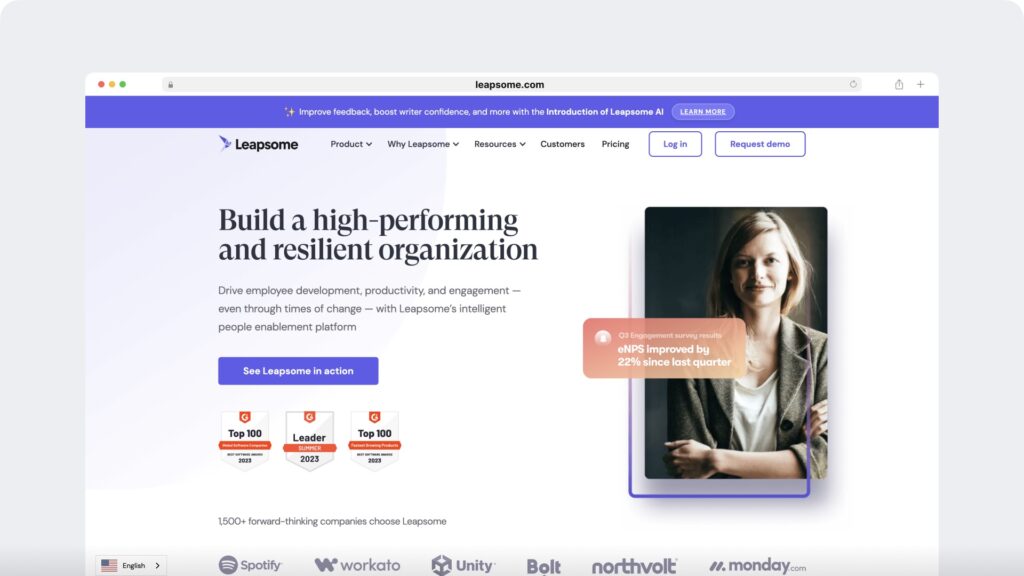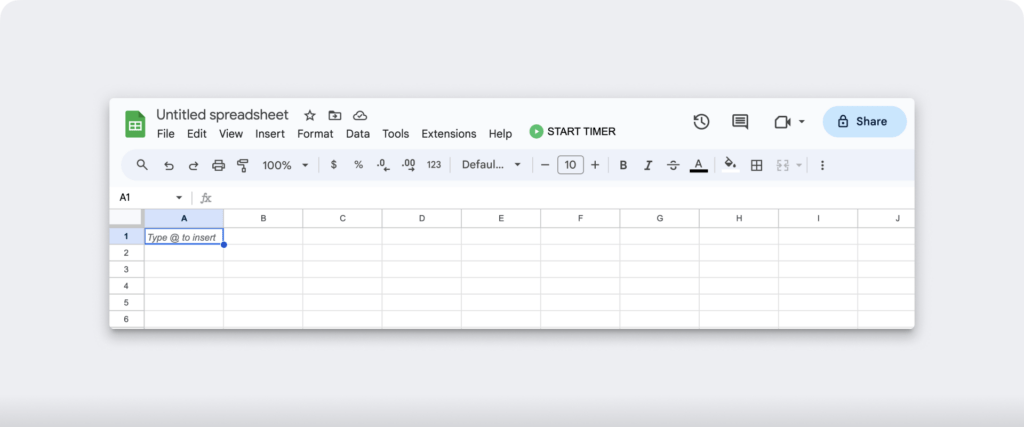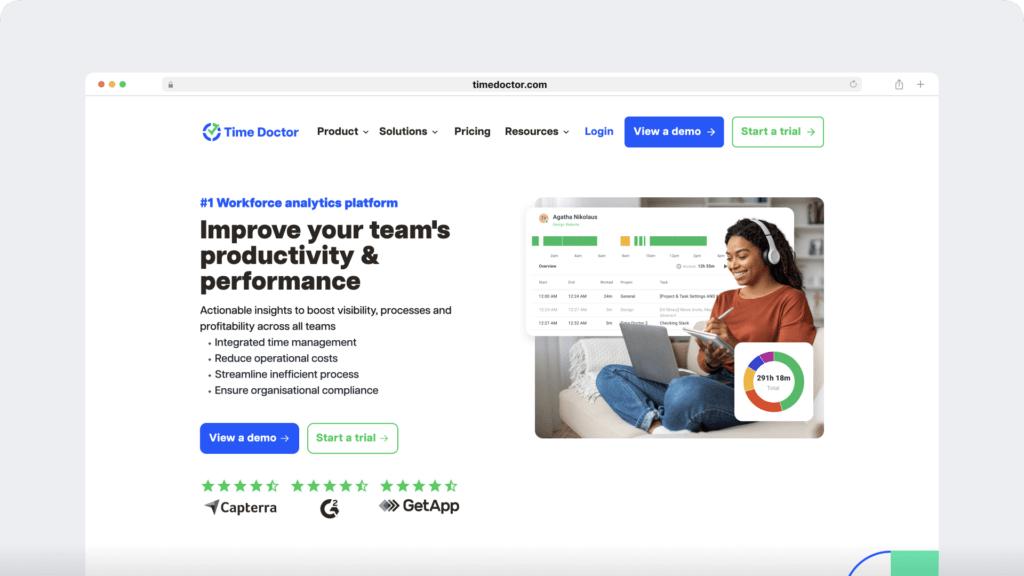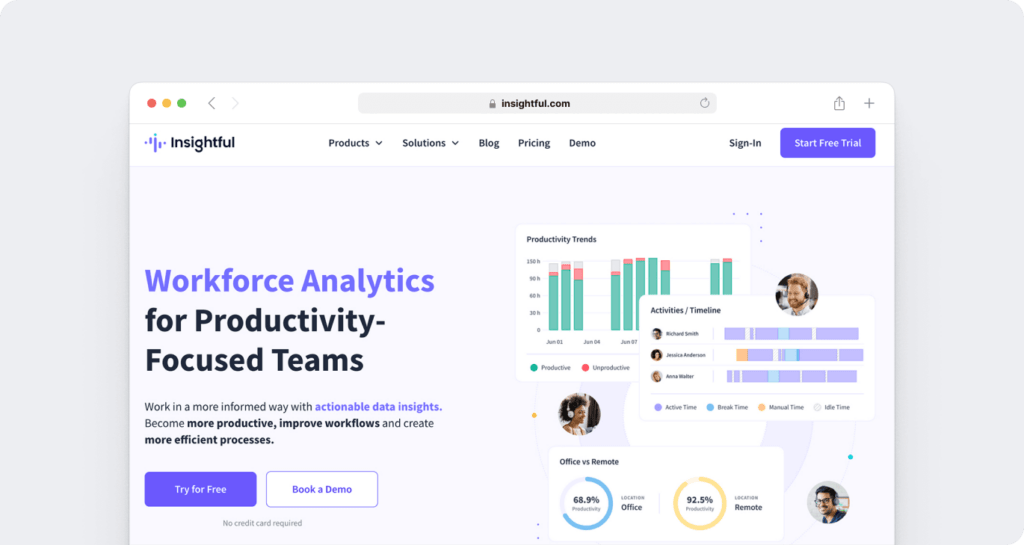Ever feel like you’re guessing whether your team is actually productive? You’re not alone. Some employees seem busy all day but don’t deliver real results, while others quietly move the needle without making a fuss. So, how do you separate real productivity from the illusion of it? How do you know if your team is truly working at their best—or just working?
That’s where employee performance tracking comes in. It helps businesses ensure their teams meet clear goals, stay on task, and contribute to the bigger picture. But let’s be honest—no one wants to feel like they’re under a microscope. Employees don’t want to be watched every second, and managers don’t want to waste time micromanaging.
So, what’s the solution? How can you track effective performance without killing morale? The good news is there are smart, effective ways to measure employee performance and productivity without making employees feel like they’re being constantly monitored. And when done right, performance tracking isn’t just about numbers—it’s about building a stronger, more efficient team.

Let’s break it down.
Table of contents
- Why employee performance management tracking matters
- Three simple ways to track employee performance
- The best tools for employee performance tracking
- How to implement performance tracking without losing employee trust
- Ready to make employee performance tracking easier?
- FAQs about employee performance tracking
Why employee performance management tracking matters
Imagine driving a car without a dashboard. No speedometer, no fuel gauge, no warning lights—just blind guessing. Would you feel confident about reaching your destination? Probably not.
Now, think about your business the same way. Without employee performance tracking, you’re making decisions in the dark. Who’s excelling? Who’s struggling? Where are the bottlenecks that slow down projects? Without real performance data, it’s easy to assume things are running smoothly—until they’re not.
When done right, monitoring employee performance helps businesses:
- Identify top performers and reward them before they start looking elsewhere
- Catch bottlenecks early before they derail progress
- Optimize workflows so employee’s work gets done faster and smarter
- Give employees the feedback they need to grow
But here’s the catch—not all tracking methods work. Some feel like an invasion of privacy, creating stress and resistance. Others don’t provide enough useful insights, leaving managers guessing anyway. So how do you find the sweet spot? How do you track performance without making employees feel like they’re under surveillance?
Let’s explore the best ways to do it—without micromanaging or killing motivation.
Three simple ways to track employee performance
Tracking employee performance doesn’t have to mean hovering over your team’s every move—but without a system in place, how do you really know who’s contributing and who’s coasting? Are your top performers being recognized, or are they quietly pulling the weight of others? And what about the employees struggling in silence—how do you spot and support them before productivity dips?
The good news is that there are smart, non-intrusive ways to track performance without disrupting your team’s workflow. Here are three approaches that work, each with its own strengths and limitations.
1. Performance reviews: The traditional approach
Most companies use some form of performance review—whether it’s a once-a-year sit-down with a manager or a 360-degree feedback system where employees get input from peers, supervisors, and even clients.
- Why it works:
✔ Gives employees clear feedback on strengths and areas for improvement
✔ Helps managers make informed decisions about promotions and raises
- Why it doesn’t always work:
✘ If done too infrequently, it misses real-time performance trends
✘ Can feel subjective if based only on personal opinions
- Pro tip: Instead of waiting for an annual review, mix in smaller, more frequent check-ins (monthly or quarterly) to keep feedback relevant and actionable.
2. Self-tracking: Giving employees more control
Instead of relying solely on managers, why not let employees track their own progress? This approach works well for independent, goal-oriented teams who thrive on autonomy. Employees can track their own KPIs (key performance indicators) using tools like Google Sheets or project management tracking software.
- Why it works:
✔ Encourages accountability and self-monitoring
✔ Gives employees flexibility in goal-setting and meeting their own benchmarks
- Why it doesn’t always work:
✘ Without external validation, it’s easy to overestimate or underestimate progress
✘ Works better for project-based tracking rather than long-term performance evaluation
- Pro tip: Have employees share their tracking reports with managers to keep things transparent and aligned with company and individual goals.
3. Automated productivity monitoring tools: The data-driven approach
Manual tracking can be tedious—and let’s be honest, not everyone has time to log every task. That’s where automated productivity tracking tools come in. Employee monitoring software like Time Doctor helps managers track work hours, task completion, and productivity trends without constant check-ins.
These tools can measure:
- Active vs. idle time
- Tasks completed and deadlines met
- Websites and apps used during work hours
- Why it works:
✔ Takes the guesswork out of employee performance tracking
✔ Provides real-time insights without manual input
- Pro tip: Use productivity analytics as a guide—not as the only measure of success. Numbers don’t always tell the full story, and a little human judgment goes a long way.
Each method has its place, and the best approach depends on your team member’s culture, work style, and business goals. The key? Tracking performance without disrupting trust—so employees feel supported, not scrutinized.
So, which method is right for your team? Let’s dive deeper into the tools that can help.
The best tools for employee performance tracking
Choosing the right performance tracking method is one thing—but without the right tools, even the best strategies can fall flat. How do you ensure tracking is seamless, efficient, and actually useful? Whether you prefer structured performance reviews, employee-driven self-tracking, or automated productivity monitoring, the right software can make all the difference.
But with so many options out there, which ones are actually worth using? Here’s a breakdown of the best tools, based on how you want to track performance.
For performance reviews (Structured & manager-driven)
If you rely on performance reviews to track employee’s progress, set SMART goals, and give employees meaningful regular feedback, these tools help simplify and streamline the process. They ensure that reviews are structured, measurable, and transparent, allowing managers and employees to align expectations and development goals.
1. BambooHR – Simplifying HR-driven performance evaluations

Best for: Small to mid-sized businesses that want an easy-to-use platform for structured performance reviews.
Why it works:
- Automates performance review cycles, ensuring evaluations don’t get delayed.
- Helps managers and employees set SMART (Specific, Measurable, Achievable, Relevant, Time-bound) goals.
- Integrates with other HR functions like payroll, benefits, and employee records.
- Customizable review templates make it easy to tailor performance evaluations to different roles.
2. Lattice – Perfect for 360-degree feedback & career development

Best for: Companies that want a holistic view of employee performance with multi-source feedback (managers, peers, and even clients).
Why it works:
- Encourages ongoing feedback instead of relying on infrequent annual performance reviews.
- Employees can request feedback on specific projects, promoting a culture of growth.
- Includes career planning tools to help employees visualize long-term development.
- AI-powered insights help managers identify performance trends across teams.
3. Leapsome – A continuous feedback & learning platform

Best for: Organizations that want to combine performance tracking with employee development.
Why it works:
- Enables real-time feedback loops, ensuring employees always know how they’re doing.
- Tracks individual employees and team progress toward key objectives.
- Offers built-in learning modules, so employees can develop skills based on performance insights.
- AI-driven competency mapping helps align employees with career growth opportunities.
For self-tracking (Employee-driven & flexible)
For teams that prefer autonomy, self-tracking allows employees to take ownership of their own performance while staying aligned with company goals. These tools offer flexibility, transparency, and accountability without micromanagement.
4. Google Sheets / Microsoft Excel – Simple yet effective for KPI tracking

Best for: Employees and teams that want a fully customizable way to track progress.
Why it works:
- Gives employees full control over their performance metrics.
- Easily integrates with other tools like Google Forms for self-assessments.
- Great for tracking KPIs, personal goals, and productivity trends over time.
- With simple formulas, employees can automate progress calculations and identify trends.
5. Asana, Trello, ClickUp – Visual task & goal tracking
Best for: Teams that manage multiple projects and need clear task visibility.
Why it works:
- Helps employees track their own progress in real time.
- Allows for transparent workload distribution, ensuring no one is overloaded.
- Promotes accountability by giving employees a clear view of their responsibilities.
- ClickUp’s “Goals” feature lets employees align daily tasks with long-term objectives.
For automated productivity tracking (Data-driven & real-tme insights)
If you want real-time data on employee productivity without disrupting workflows, automated tracking tools do the heavy lifting. These platforms use AI-powered analytics to measure performance efficiently, giving managers a clearer picture of how work gets done—without the need for constant check-ins.
6. Time Doctor – Comprehensive productivity insights & workforce analytic software

Best for: Businesses that need detailed, real-time insights into employee performance, time management, and productivity trends—without micromanaging.
Why it works:
- Tracks work hours with precision: Employees can log time on tasks, projects, or clients, ensuring accurate billing and workload analysis.
- Breaks down time spent on tasks: Managers can see exactly where time is allocated—helping identify inefficiencies, time sinks, and workflow bottlenecks.
- Distinguishes active vs. idle time: Tracks keyboard and mouse activity (without screen recording) to differentiate between focused work and inactivity.
- Provides in-depth reports and dashboards: Generates automatic timesheets, productivity summaries, and attendance reports for easy performance evaluation.
- Monitors website and app usage: Helps identify potential distractions by tracking work-related vs. non-work-related applications.
- Integrates with major project management tools: Seamlessly connects with Asana, Trello, ClickUp, Slack, Jira, and HubSpot, ensuring a smooth workflow.
- Reduces manual tracking errors: Automates timekeeping, minimizing the risk of inaccurate self-reporting.
- Customizable privacy settings: Offers flexibility to track employee time without feeling intrusive—allowing businesses to enable or disable certain monitoring features.
- Helps remote and hybrid teams stay accountable: Especially useful for businesses with remote workers, ensuring fairness in workload distribution.
Advanced feature highlight:
- Distraction Alerts – If an employee spends too much time on unproductive websites, Time Doctor sends a gentle nudge to refocus, boosting overall efficiency.
- Client-Friendly Reporting – Agencies and service-based businesses can generate detailed work reports to provide transparent proof of work to clients.
- Productivity Trends Over Time – Instead of just tracking daily activity, Time Doctor analyzes long-term performance trends, helping teams proactively optimize workloads.
Pro tip:
Use Time Doctor’s automated reports to spot productivity patterns and adjust workflows, ensuring that top performers don’t get overworked while identifying employees who may need additional support. Its combination of time tracking, analytics, and focus-enhancing features makes it one of the most comprehensive tools for performance optimization.
7. ActivTrak – AI-powered employee engagement analytics

Best for: Companies that want deep insights into team engagement, workload balance, and workflow efficiency.
Why it works:
- Analyzes work patterns to detect productivity trends across teams.
- Helps managers balance workloads by identifying overworked or underutilized employees.
- Provides automated alerts for workflow bottlenecks before they impact deadlines.
- Encourages healthier work habits by tracking overtime and preventing burnout.
8. Insightful – AI-driven work pattern analysis

Best for: Teams that want automated, intelligent insights into work behavior and productivity without manual tracking.
Why it works:
- Uses AI to distinguish between productive and unproductive work patterns.
- Provides real-time performance dashboards for managers and employees.
- Helps businesses optimize processes by identifying workflow inefficiencies.
- Supports hybrid teams with remote-work monitoring features that track productivity trends across different work environments.
Which tool is right for you?
The best tool depends on your business goals, team structure, and tracking preferences. Do you need structured performance evaluations? Employee-driven tracking? Or real-time productivity insights?
No matter which approach you choose, the key is finding a system that helps your team grow—not one that makes them feel like they’re under a microscope.
How to implement performance tracking without losing employee trust
Performance tracking can be a game-changer for productivity—but only if employees see it as a tool for growth, not surveillance. The moment tracking feels like micromanagement, trust takes a hit, motivation drops, and suddenly, what was meant to boost performance ends up doing the opposite.
So, how do you track performance without making employees feel like they’re constantly being watched? How do you use data to empower teams rather than control them?
Here’s how to get it right.
1. Be transparent about why you’re tracking performance
Nobody likes the feeling of being monitored—especially if they don’t understand why. If employees think tracking is just a way to catch mistakes, they’ll resist it. Instead, make it clear that performance tracking is about helping them succeed, not policing their every move.
- Show employees how tracking helps identify growth opportunities and leads to promotions.
- Explain how it can reduce burnout by balancing workloads more effectively.
- Emphasize that tracking creates a fairer, more objective work environment—where high performers are recognized, and struggling employees get support.
The goal? Employees should see tracking as a benefit, not a burden.
2. Mix data with human feedback
Tracking tools provide valuable insights, but numbers don’t tell the full story. A sudden drop in productivity might not mean an employee is slacking—it could mean they’re overloaded, dealing with personal challenges, or stuck on a project bottleneck.
That’s why data should always be paired with real conversations.
- Instead of relying solely on tracking tools, schedule regular check-ins to discuss challenges and wins.
- Use data as a starting point, not a final judgment—ask questions before making assumptions.
- Create an open environment where employees feel comfortable sharing their struggles and seeking help.
The best managers don’t just look at numbers—they listen to people.
3. Use tracking to help, not to punish
Want employees to embrace performance tracking? Make it a tool for growth, not fear. If tracking is only used to call out underperformers, employees will feel like they’re walking on eggshells. Instead, use it to reward top performers, refine workflows, and support those who need extra guidance.
- Celebrate high performers and recognize their contributions publicly.
- Use tracking insights to remove inefficiencies that slow teams down.
- If someone is struggling, offer coaching, resources, or workload adjustments—not just criticism.
Tracking should feel like a support system, not a surveillance system.
Trust first, data second
The secret to successful employee performance tracking? Trust. When employees feel like tracking is there to help—not to punish—they’ll be more engaged, productive, and open to feedback.
So before rolling out any performance tracking system, ask yourself: Does this empower my team, or does it make them feel watched?
Get it right, and you’ll create a culture of transparency, growth, and high performance—without sacrificing trust.
Ready to make employee performance tracking easier?
Tracking employee performance shouldn’t feel like micromanaging—and it doesn’t have to. The key isn’t just collecting data; it’s balancing productivity tracking with trust. When done right, performance tracking motivates teams, improves workflows, and makes sure great work never goes unnoticed.
But let’s be honest—manually tracking performance is exhausting. Spreadsheets pile up, feedback gets lost, and by the time you catch a problem, it’s already too late. That’s why smart tracking tools make all the difference.
If you’re looking for a way to measure productivity without the guesswork, try Time Doctor. It provides real-time insights, helps teams stay focused, and gives you the data you need—without constant check-ins.
Book a demo today and see how Time Doctor can transform your team’s productivity—without disrupting trust.
FAQs about employee performance tracking
Still have questions about employee performance tracking? You’re not alone. Here are answers to some of the most common concerns managers and employees have when it comes to tracking productivity the right way.
1. What is employee performance tracking?
It’s the process of measuring productivity, goal progress, and efficiency using performance tracking tools, feedback systems, or self-monitoring methods. When done well, it helps businesses spot bottlenecks, reward high performers, and optimize workflows—without micromanaging.
2. How often should I track employee performance?
While annual review processes are the standard, they often miss real-time performance trends. Monthly or quarterly check-ins provide more relevant insights, keep feedback fresh, and help employees improve before issues snowball.
3. How do performance tracking tools improve productivity?
They turn guesswork into data-driven decisions. The right tools help managers:
- Identify bottlenecks before they slow down projects
- Recognize high performers and reward them
- Optimize workflows so employees spend less time on inefficient tasks
4. How do I track performance without micromanaging?
The key is transparency and balance. Instead of constant check-ins, use:
✔ Self-tracking tools that let employees monitor their own progress
✔ Automated tracking systems (like Time Doctor) to collect insights without hovering
✔ Clear communication so employees know tracking is about improvement, not surveillance
5. What if employees don’t like being tracked?
If employees resist tracking, it’s usually because they don’t understand the “why.” Be upfront about its purpose:
- Explain how tracking helps them grow (not just how it benefits the company)
- Make sure it’s fair and unbiased—no one wants to feel singled out
- Focus on supporting employees rather than punishing them
Still unsure how to implement tracking without disrupting your team? The right tools can make the process smooth, transparent, and stress-free.

Carlo Borja is the Content Marketing Manager of Time Doctor, a workforce analytics software for distributed teams. He is a remote work advocate, a father and an avid coffee drinker.


